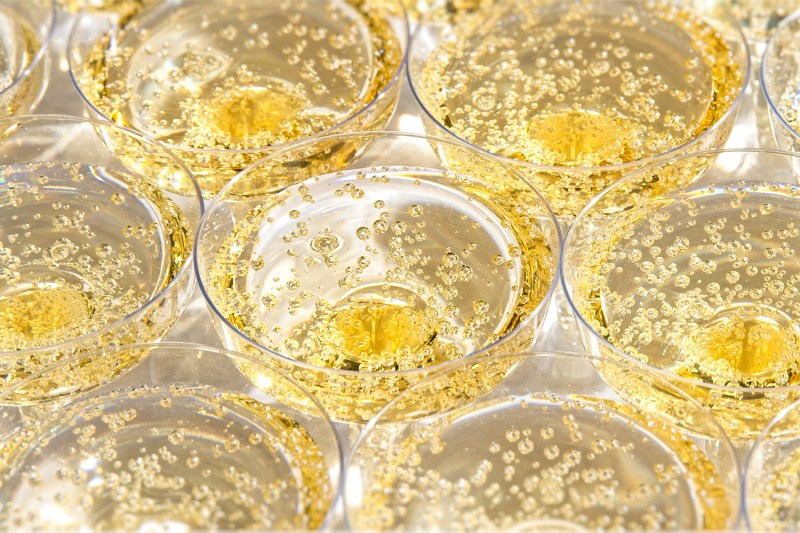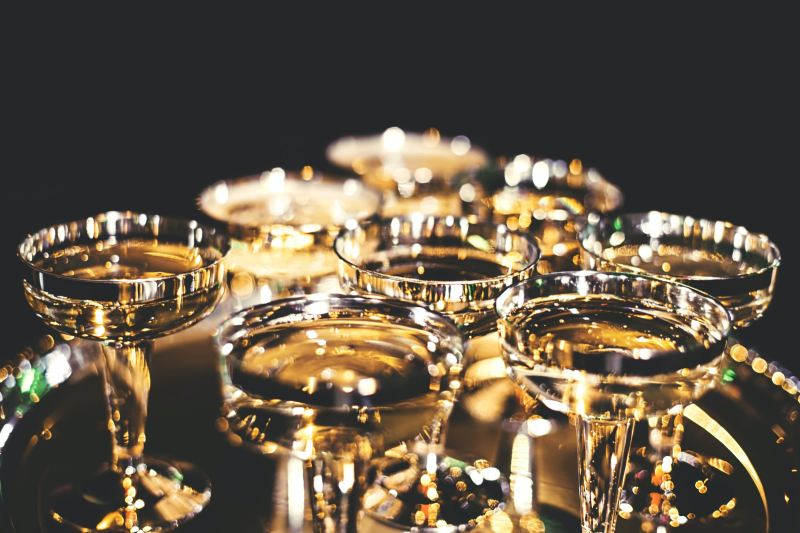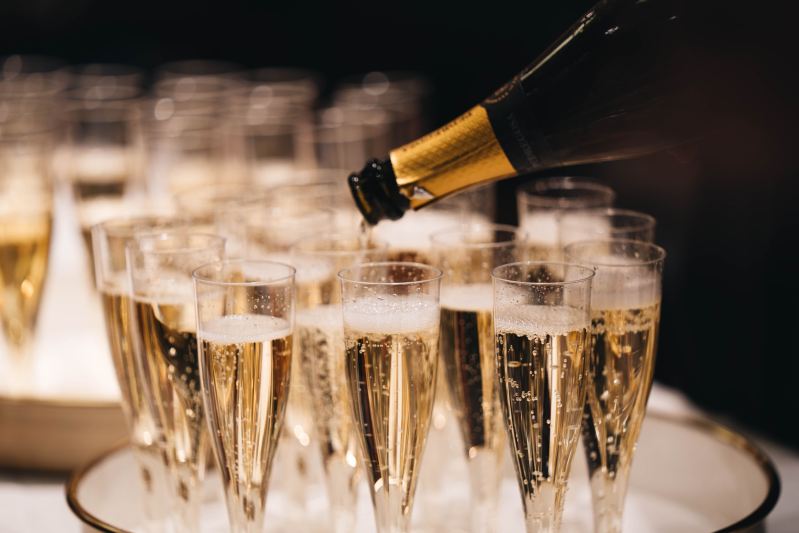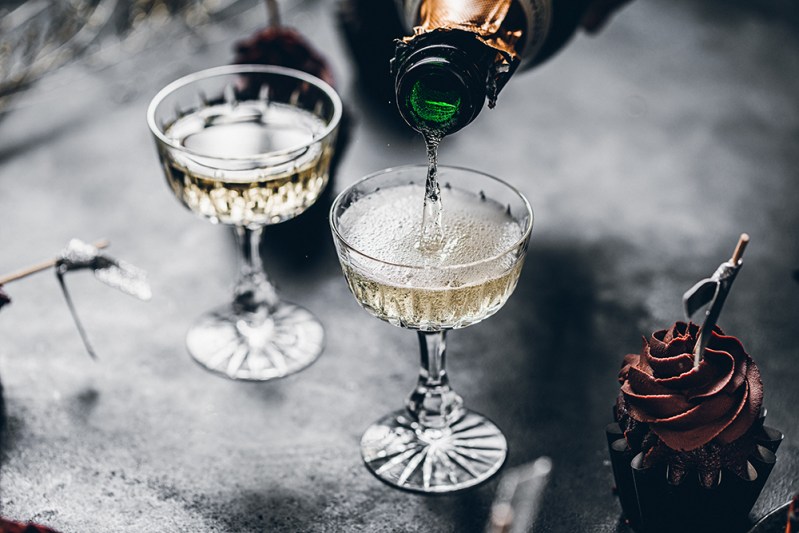Is there anything in the world more wonderful than a beautifully bubbly glass of Champagne? We would argue that one would be hard pressed to find a competitor. After all, Champagne is the most cheerful of wines, its pearly bubbles tickling the nose and effortlessly raising the spirits. It’s impossible to sip a glass and not feel even the slightest bit happier, and for that, dear Champagne, we are thankful.
And while we are well into the New Year and the ball-dropping, glittery holiday celebrations are over, we absolutely refuse to let the cork-popping cease. After all, there’s always a reason to celebrate with a bottle of Champagne. A new job, a visit from a friend, Tuesday morning, whatever strikes your fancy.
Champagne terms explained
The language of wine can be a confusing one, to be sure. But when it comes to Champagne, things get even more complicated. To understand this bubbliest of beverages, there are a few terms that one should get to know. Not to worry. We’ve compiled a bit of a cheat sheet.
Non-vintage (NV)
In wine language, the word “vintage” refers to the year the wine grapes for any particular bottle were harvested. To say that a wine is non-vintage (or NV for short) means that the wine is comprised of a blend of wines made from grapes harvested in various years.
Blanc de blancs
Directly translated from French, the term “blanc de blancs” means “white of whites.” This refers to Champagne that has been made purely from white grapes – in most cases, Chardonnay.
Blanc de noirs
Meaning “white of black,” blanc de noirs are Champagnes that are created with either Pinot Noir, Pinot Meunier, or a mixture of both grapes.
Cru
Meaning “growth” in French, the word Cru describes a vineyard or wine village where the winemaking happens. These villages are ranked based on terroir, landscape, soil, and many other factors that determine the quality of the grapes and the wine made. Each village is ranked on a scale of 0-100%. However, no Cru is ranked less than 80%. Grand Crus are 100%, Premier Cru 90-99% and Autre Cru 80-89%.
There are only 17 villages in the Grand Cru category, as this is the most prestigious and grandest of the three. Premier Cru is the second best with 43 villages, and the Autre Cru category has 264 winemaking villages.
Champagnes to drink in 2024
If you’re anything like us, you probably already have your favorite bottles of Champagne on standby that you turn to when the mood strikes, but it might be time to branch out and try some new bubbles. These five bottles of Champagne are our absolute top choices to drink in 2024.

5. Ruinart Brut Blanc de Blancs ‘Second Skin’ Champagne
This vibrantly toasty Champagne is rich and warm with baked notes of brioche and roasted almonds. Made from a beautiful blend of 100% premiers crus Chardonnay grapes from the estate vineyards in Sillery and Brimont (the ancestral home of the Ruinart family) as well as carefully selected grapes from other premiers crus vineyards in the Côte de Blancs and the Montagne de Reims. This wine shines in its gentle honey and mineral touches and finishes long and clean.

4. Nicolas Feuillatte Palmes d’Or Grand Cuvee 2008
While we know it’s what’s inside that counts (and that is also spectacular), we can’t get enough of this gorgeous bottle from Nicolas Feuillatte. Truly beautiful on both the inside and outside, this luscious Champagne is made from the grapes of eight Grand Cru vineyards. Elegantly toasted but simultaneously fresh and zesty with citrus, this perfectly balanced wine is absolutely flawless.

3. Champagne Palmer Rose Solera
We love a good rose Champagne, and this one is beyond extraordinary. Fresh and fruity with hints of strawberry and juicy currants, this full-bodied, mildly tannic wine is the perfect blend of sweet and spicy. Made from a combination of 42% Chardonnay, 40% Pinot Noir, 10% Pinot Meunier, and 8% Solera of Pinot Noir, this Champagne is perfect for any garden party, and it won’t break the bank.

2. Taittinger Brut Millesime 2015
The 2015 Champagne Millésime Brut is lush and full, with aromatics of marmalade, stone fruit, and wild berries. Comprised of equal parts Chardonnay and Pinot Noir, with 70% of the best grapes from the Grand Cru villages and 30% of the best wines from the Premier Cru Villages, this Brut is well-rounded and full. Each sip has fine bubbles that feel like pearls on the tongue, accented with light touches of citrus on the finish. This wine is truly spectacular.
1. Armand de Brignac Ace Of Spades Gold Champagne Brut
The most decadent and splurge-worthy Champagne on our list is the Brut Gold from Armand de Brignac. This iconic Champagne is rich with history and flavor, and boasts a trio of vintages from some of the most lauded terroirs in the Champagne region. Complex and beautifully layered, this vibrant wine gives strong notes of peach, apricot, and berry, giving way to zesty citrus and toasted brioche. This Brut’s mouthfeel is creamy and rich and feels wildly luxurious on the palette, finishing with touches of vanilla and honey.
How to really enjoy Champagne
Truthfully, there’s no wrong way to enjoy Champagne. Some of my favorite glasses have been sipped out of a coffee mug and paired with a bag of potato chips (ah, college days). But if you’re looking for a more sophisticated food pairing, we recommend creamy seafood pasta dishes or cold and briny oysters fresh from the sea. Champagne is also beautiful when paired with eggs, so there’s no reason not to pop a bottle at brunch.
And while these flirty bubbles are perfect on their own, they also blend beautifully in a wide range of cocktails. My personal favorite is a Kir Royale, which is simply a tall glass of Champagne and about an ounce of Chambord, garnished with fresh raspberries. Perfection.
Editors' Recommendations
- How to make a Dark and Stormy, the rum-centric sibling of the Moscow Mule
- The best cheese for burgers: Our top 7 favorites
- These unique summer cocktails each offer a refreshing twist you’ll love
- The best spritz cocktail recipes to drink this spring
- How to open a wine bottle without a corkscrew








